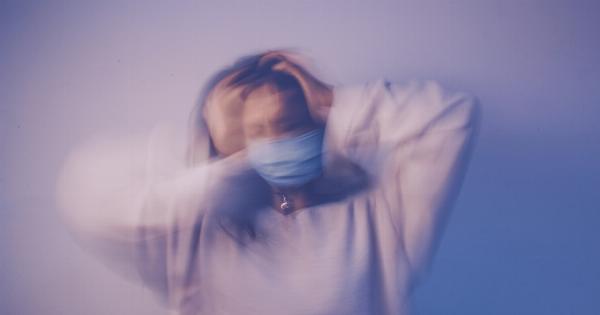Peyronie’s Disease is a condition that affects the penis, causing it to develop a curvature or curvature, making sexual intercourse painful or even impossible.
Traditionally, surgery has been the primary treatment option for Peyronie’s Disease. However, surgical procedures carry risks and potential complications. This has led researchers to explore alternative treatment options that may be effective in managing the symptoms of Peyronie’s Disease without the need for surgery.
Understanding Peyronie’s Disease
Peyronie’s Disease is named after François Gigot de la Peyronie, a French surgeon who first described the condition in 1743. It is characterized by the development of fibrous scar tissue, often referred to as plaques, within the penis.
These plaques can cause the penis to curve, making it difficult to achieve or maintain an erection. Peyronie’s Disease can also cause pain during erection, which can further impair sexual function.
The exact cause of Peyronie’s Disease is not fully understood. However, it is believed to be related to trauma or injury to the penis, which triggers an abnormal healing response.
This abnormal healing process leads to the formation of scar tissue within the penis. Certain risk factors, such as family history, age, and certain medical conditions, may increase the likelihood of developing Peyronie’s Disease.
Surgical Treatment Options
Traditionally, surgery has been the most common treatment option for Peyronie’s Disease. Surgical procedures aim to correct the curvature of the penis and remove the scar tissue.
However, surgery comes with its own set of risks and potential complications, including infection, erectile dysfunction, and changes in penile sensation. Additionally, surgical procedures can be costly and require a significant recovery period.
Despite these potential risks and complications, surgery remains an effective treatment option for severe cases of Peyronie’s Disease where the curvature is significantly affecting sexual function and quality of life.
Non-Surgical Treatment Options
Over the years, several non-surgical treatment options have been explored for Peyronie’s Disease. These treatments aim to reduce pain, improve penile curvature, and restore sexual function without the need for surgery.
While not all non-surgical treatments are supported by extensive scientific evidence, they may still be considered as alternatives in certain cases.
1. Oral Medications
Several oral medications have been studied for their potential efficacy in treating Peyronie’s Disease. These medications include vitamin E, tamoxifen, and colchicine. Vitamin E is an antioxidant that may help reduce scar tissue formation.
Tamoxifen, a medication commonly used in breast cancer treatment, has shown promise in reducing penile curvature. Colchicine, an anti-inflammatory drug, has also been investigated for its potential benefits in Peyronie’s Disease. However, the results of these studies have been mixed, with some showing limited effectiveness.
2. Injections
Injectable treatments, such as collagenase clostridium histolyticum (CCH) and verapamil, have been explored as non-surgical options for Peyronie’s Disease. CCH is an enzyme that breaks down the collagen buildup responsible for penile curvature.
Verapamil, a calcium channel blocker, may help reduce plaque size and improve penile curvature. These injections are administered directly into the plaques within the penis. While these treatments have shown some promise, further research is needed to determine their long-term efficacy and safety.
3. Extracorporeal Shockwave Therapy (ESWT)
Extracorporeal Shockwave Therapy (ESWT) involves using high-frequency sound waves to target and break down the plaques responsible for penile curvature. ESWT has shown promising results in reducing pain and improving erectile function in some studies.
However, its effectiveness in correcting penile curvature is still being evaluated.
4. Penis Traction Devices
Penis traction devices are non-invasive devices that apply gentle traction to the penis to gradually stretch the scar tissue and reduce curvature. These devices are typically worn for a specific period each day over several months.
While there is limited scientific evidence supporting their long-term efficacy, some men have reported improvements in penile curvature and sexual function with the use of traction devices.
5. Physical Therapy and Exercises
Physical therapy and exercises can also be beneficial in managing Peyronie’s Disease. These techniques aim to stretch and mobilize the penis, helping to reduce curvature and improve erectile function.
Physical therapists specializing in pelvic floor and sexual function can provide guidance and tailored exercise plans for individuals with Peyronie’s Disease.
Lifestyle Modifications
In addition to non-surgical treatment options, certain lifestyle modifications may help manage Peyronie’s Disease and improve overall sexual function. These lifestyle changes include:.
1. Healthy Diet
Eating a balanced diet rich in fruits, vegetables, whole grains, and lean proteins can support overall penile and cardiovascular health. Maintaining a healthy weight and avoiding excessive alcohol consumption can also positively impact sexual function.
2. Smoking Cessation
Smoking has been linked to an increased risk of Peyronie’s Disease and can worsen symptoms. Quitting smoking can improve blood flow and overall vascular health, potentially reducing the progression of Peyronie’s Disease.
3. Stress Reduction
Chronic stress can affect sexual function. Engaging in stress reduction techniques, such as meditation, yoga, or counseling, can help improve overall well-being and sexual function.
Conclusion
Peyronie’s Disease can significantly impact a man’s quality of life, causing pain and affecting sexual function.
While surgery has traditionally been the primary treatment option for severe cases, non-surgical alternatives are being explored. Although further research is needed to establish the long-term efficacy and safety of these non-surgical treatments, they offer potential options for individuals seeking alternatives to surgery.
With the help of healthcare professionals, individuals with Peyronie’s Disease can explore various treatment options and make an informed decision based on their individual needs and preferences.



























